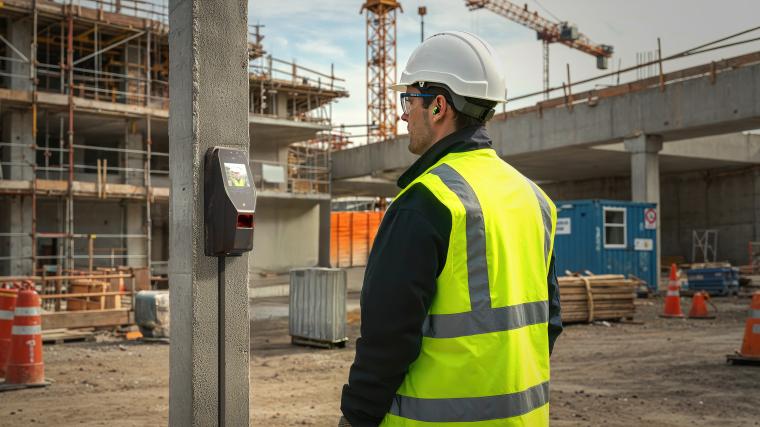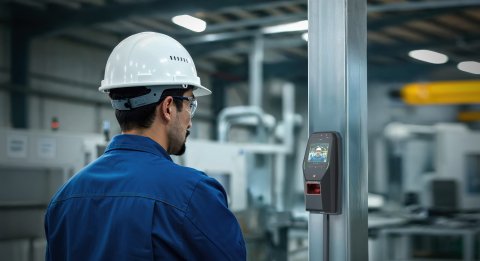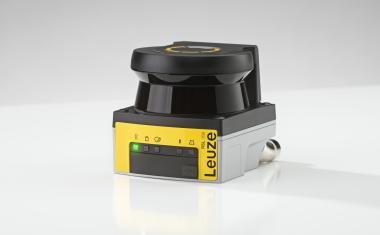Breaking the Mold: Why Industrial Biometrics Demand a Different Playbook
Automation, digitalization, and geopolitical dynamics are rewriting the industrial playbook, therefore conversations around security and workforce management need to catch up fast. The industrial sector powers economies worldwide, and this is why my conviction stands firm: biometric security solutions designed for polished office environments simply crumble when faced with the hazardous realities of industrial settings.
Shiraz Kapadia

Author: Shiraz Kapadia, Founder, CEO and President of Invixium
Shiraz Kapadia is the CEO & President at Invixium. As a biometric industry veteran and thought leader, Shiraz provides the overall vision and works tirelessly to grow the company and innovate high-end security solutions for a modern world.
This is far more than a technology challenge. It’s a wake-up call to rethink how we engineer biometric solutions for rugged applications. How do we design these systems? Where do we build them? How customizable are they? Are they truly made for dust-choked air, gloved hands, remote sites, and ever-shifting crews? Because if we keep forcing generic, substandard biometric systems onto industrial and critical infrastructure settings, we’re inviting disaster. Vulnerabilities will be exposed, putting safety, security, and entire operations at risk.

The environment is a defining factor, not an afterthought. Biometric solutions engineered for enterprise environments stand in stark contrast to the volatile, high-stakes realities of manufacturing plants, mining sites, and energy facilities. Mismatched technology is a liability no industrial operation can afford. This becomes especially profound for a manufacturing powerhouse like Europe, where industrial output is the backbone of economic resilience. In such a landscape, misaligned biometric technology carries real-world, irreversible consequences.
The Industrial Reality
Industrial sites don’t play by corporate rules. They’re brutal, unpredictable, extreme, and relentless. In an office, a biometric device may authenticate a few dozen employees per hour in climate-controlled comfort. Contrast this with a manufacturing site or a wind farm where hundreds of workers cycle in and out, in harsh weather, often with dirty hands, gloves, and with little time for delays. In these environments, authentication must be rapid, reliable, and unobtrusive. Devices need to withstand vibration, temperature variation, moisture, and high UV exposure. Helmets, goggles, and masks make conventional face recognition ineffective. When delays at checkpoints create bottlenecks, productivity suffers, tempers flare, and safety protocols are bypassed.

sunlight, and vibration-heavy environments – where traditional biometric systems fail
The False Economy of Off-the-Shelf Tech
Off-the-shelf biometric systems look tempting because they are cheap and appear easy to deploy. But this approach is short-sighted. The upfront savings quickly disappear under the weight of costly downtime, frequent device replacements, and heavy IT support demands. Most generic biometric solutions aren’t built with industrial-grade data governance in mind, lacking modern encryption standards and audit-ready logs. This can expose organizations to significant legal and financial vulnerabilities. Beyond compliance, they also struggle to integrate with complex industrial systems and workforce management platforms. What may start as a “budget” fix quickly snowballs into an expensive liability over time.
Customization as a Strategic Advantage
Industrial biometrics must be designed from the ground up with a deep understanding of how factories, plants, and field sites operate. This means devices must be ruggedized and sealed against dust, water, and impact, and built with architectural flexibility. Consider a use case in the chemical industry, where workers may need to authenticate at multiple secure zones across a vast facility. A custom biometric system allows for dynamic credentialing: different modalities based on the zone, clearance levels, and role-based access tied to certifications or time restrictions. This leads to tighter security and fewer headaches in high-traffic environments.
Scalability is an Industrial Imperative
Industrial operations often expand unpredictably to a new site, a new subcontractor, or a temporary workforce surge. Seasonal staff, multi-vendor contract teams, rotating shifts, and geographically dispersed sites define this ecosystem. A truly industrial-grade biometric solution must handle this volatility without constant infrastructure changes. It must offer offline functionality for remote locations, role-based access, and seamless integration with existing systems. This is not just a nice-to-have. It is the operational core of a future-ready security framework.
Security and Sovereignty in a Digital Age

In an era defined by heightened geopolitical tensions and the constant threat of digital espionage, protecting biometric data is non-negotiable. Vendors that ship closed-loop, white-labeled systems from overseas with zero grasp of the real environment introduce unacceptable risks. Too often, these systems come with proprietary or weak encryption, no clear path for firmware upgrades, and closed APIs that block independent audits. This creates openings for data breaches, identity fraud, and regulatory violations, putting industrial organizations in a position they cannot afford to be in.
Purpose-built, field-proven biometrics is not a capability every manufacturer can deliver. It demands vision, deep technical expertise, and engineering precision that only a select few future-focused companies have mastered. These solutions must be built for the environment, not for the showroom. I ardently believe that biometrics is the gold standard for security and operational control, but it is definitely not a plug-and-play solution. The upfront investment of purpose-built biometric solutions may seem high, but when engineered with the end user in mind, it delivers unmatched reliability, longevity, and return on value. In industries where every second counts and every breach risks millions, only biometrics built to meet real-world challenges can lead the way. Anything less is simply not acceptable.












